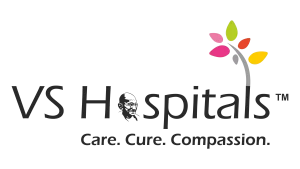Pulmonary hypertension symptoms can be subtle, and potentially overlooked, yet they significantly affect the heart and lungs. Identifying these signs early is crucial for prompt intervention. This guide intends to illuminate the symptoms associated with pulmonary hypertension, aiming to enhance awareness and comprehension of this condition for better recognition and management.
Understanding Pulmonary Hypertension
Pulmonary Hypertension (PH) involves elevated blood pressure in the arteries of the lungs.
This condition strains the heart and may lead to complications if left untreated.
Common Symptoms of Pulmonary Hypertension
Certainly! The common symptoms of pulmonary hypertension often manifest gradually and may vary from person to person:
Shortness of Breath:
- Experienced during physical activity or even at rest.
- Gradually worsens over time and can limit daily activities.
Fatigue:
- Continual fatigue or weakness, persisting despite sufficient rest.
- Fatigue is often disproportionate to the level of physical exertion.
Chest Pain:
- Discomfort or pressure in the chest, especially during physical activity.
- Can be mistaken for heart-related issues but may persist even at rest.
Rapid Heart Rate:
- Heart palpitations or an increased heart rate.
- Occurs even without physical exertion and might lead to a sensation of a racing heart.
Fainting Spells:
- Sudden episodes of losing consciousness.
- Fainting might occur unpredictably and requires immediate medical attention.
These symptoms, when persistent or severe, warrant prompt medical evaluation to ascertain the underlying cause, especially if pulmonary hypertension is suspected.
Additional Symptoms in Advanced Stages
As pulmonary hypertension progresses into advanced stages, additional symptoms beyond the common indicators may surface:
Lightheadedness or Dizziness:
- Frequent bouts of feeling lightheaded or dizzy, often unrelated to sudden movements.
- Dizziness might worsen with physical exertion or when changing positions.
Swelling in Legs and Ankles (Edema):
- Noticeable swelling in the legs, ankles, or abdomen due to fluid retention.
- Edema might result from the heart’s inability to pump blood effectively.
Blue Lips or Fingertips (Cyanosis):
- Skin, lips, or fingertips might appear bluish due to inadequate oxygen levels.
- Cyanosis is a sign of decreased oxygen saturation in the bloodstream.
Coughing up Blood (Hemoptysis):
- Occasional or frequent coughing up of blood can indicate severe complications.
- Hemoptysis requires immediate medical attention for further evaluation and treatment.
These advanced symptoms indicate a progression of pulmonary hypertension and necessitate urgent medical intervention to manage the condition effectively.
Pulmonary Hypertension Symptoms in Adults
Pulmonary hypertension symptoms can manifest differently in adults and understanding these variations is crucial:
Increased Risk with Age
- As individuals age, the manifestation of pulmonary hypertension symptoms in adults might become more prominent.
- The impact of these symptoms can vary, potentially interfering with daily activities and diminishing overall quality of life.
- Recognizing these signs in adults is particularly vital for timely intervention and effective management of pulmonary hypertension.
Underlying Conditions
- In the context of pulmonary hypertension symptoms in adults, individuals with pre-existing heart or lung issues may encounter intensified symptoms.
- Conditions such as heart disease or chronic lung disorders can exacerbate the manifestations of pulmonary hypertension, potentially leading to a more noticeable impact on the overall health of adults. Recognizing these associations is crucial for a comprehensive understanding and management of pulmonary hypertension in the adult population.
Diagnosis Challenges
- Identifying pulmonary hypertension in adults can be complex.
- Symptoms may mimic those of other health issues, requiring specialized tests for accurate diagnosis.
Recognizing symptoms in adults, especially when linked to underlying health conditions, necessitates vigilant monitoring and timely medical intervention for the effective management of pulmonary hypertension.
Understanding Pulmonary Hypertension Symptoms
Pulmonary hypertension symptoms can vary in severity and presentation. Here are key takeaways:
- Common Signs: Shortness of breath and fatigue are early indicators, while chest pain and rapid heart rate may manifest later.
- Progression: As the condition advances, additional symptoms like dizziness, swelling, and cyanosis may become evident.
- Advanced Stages: Severe symptoms such as coughing up blood necessitate immediate medical attention.
- Adults and Risk Factors: Adults may experience symptoms more prominently, especially when associated with underlying health conditions.
- Diagnosis Challenges: Identifying PH can be challenging due to its resemblance to other conditions, warranting specialized tests for accurate diagnosis.
Conclusion
Recognizing and understanding pulmonary hypertension symptoms is pivotal for timely intervention and management. Early detection can significantly impact treatment outcomes. If you or someone you know experiences any of these symptoms, seeking medical evaluation is crucial.
Read also Tests for Kidney Disease.




